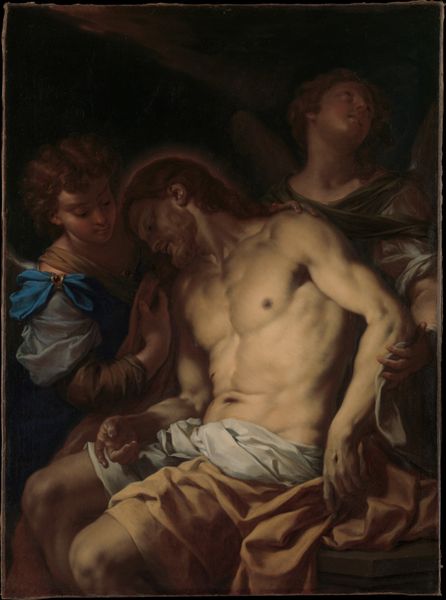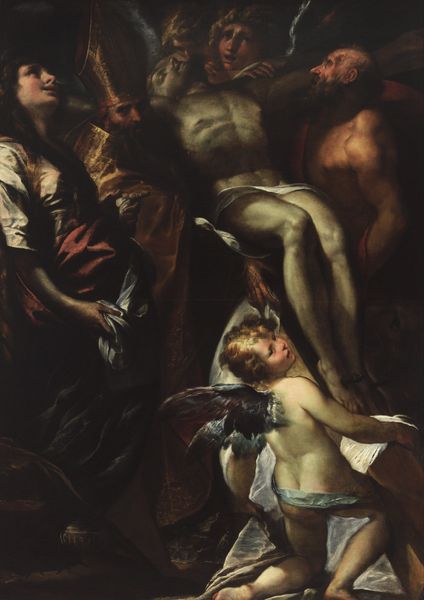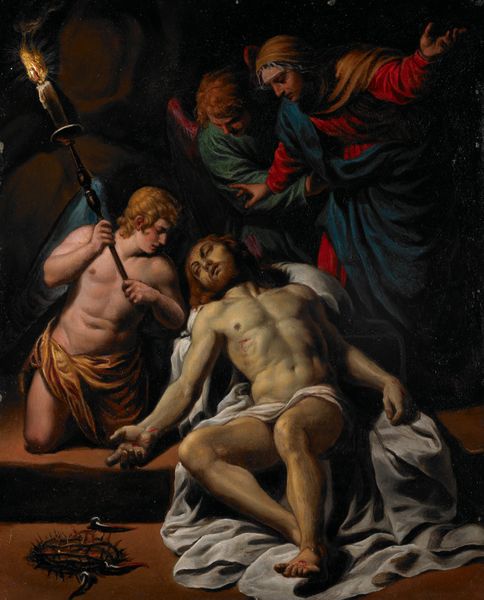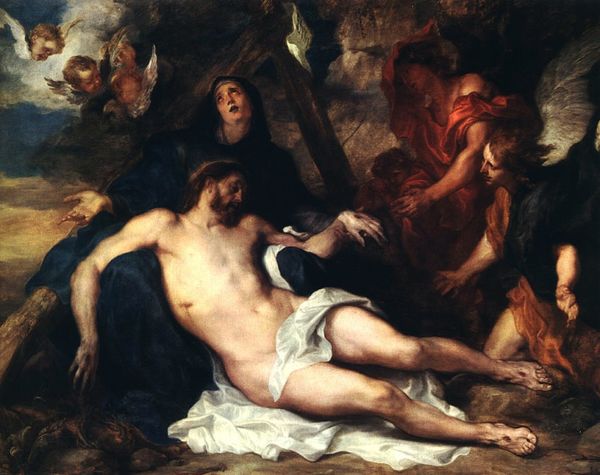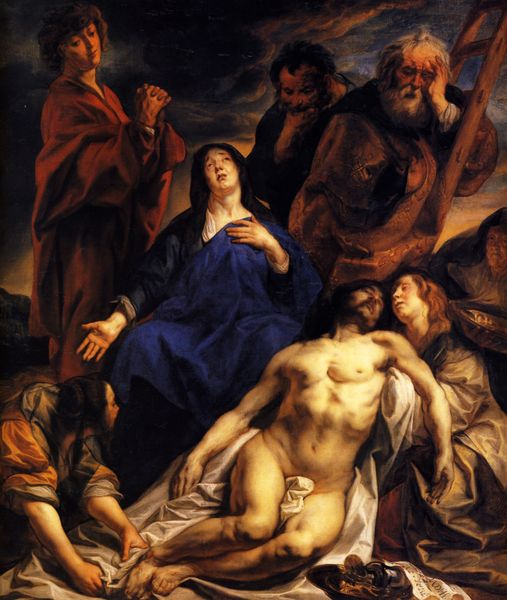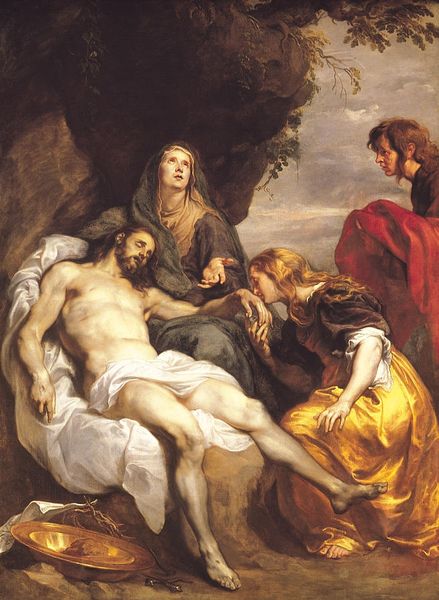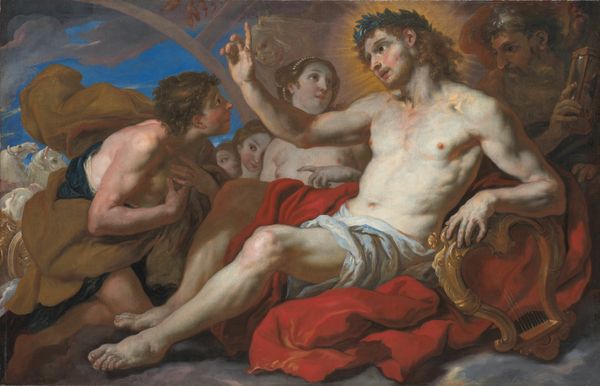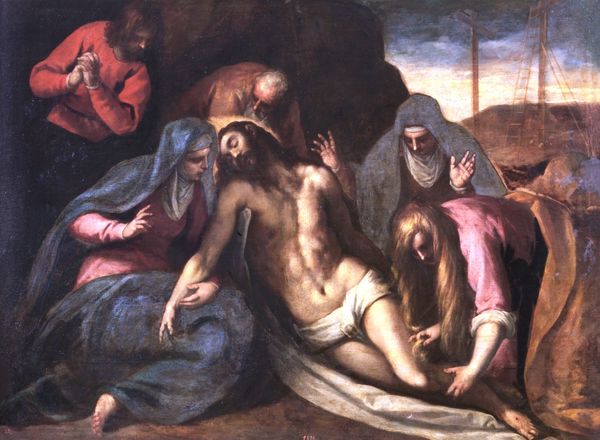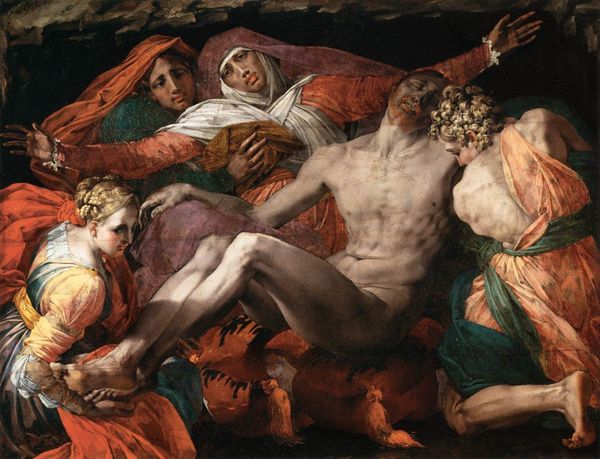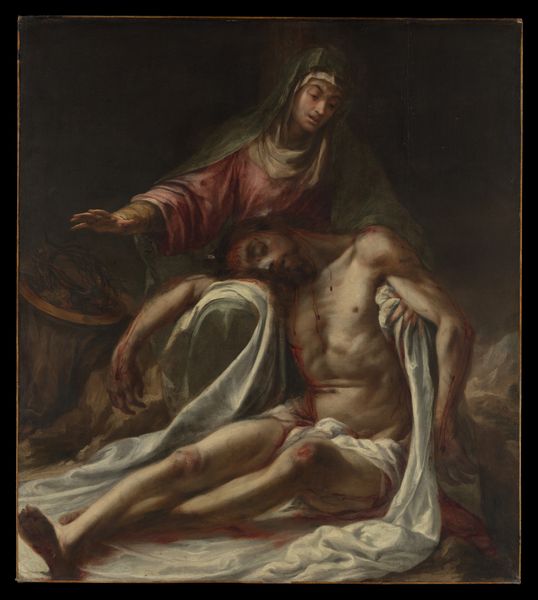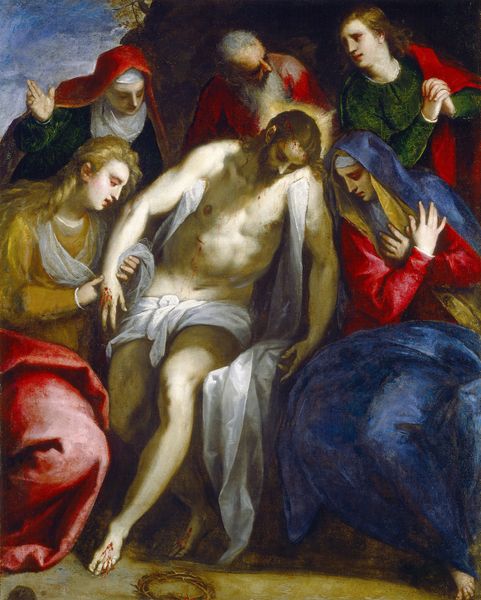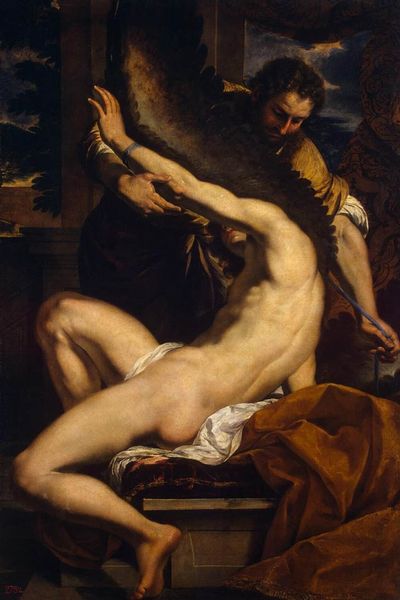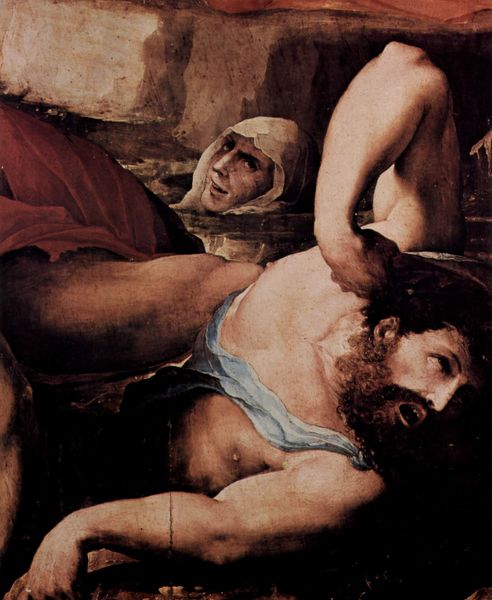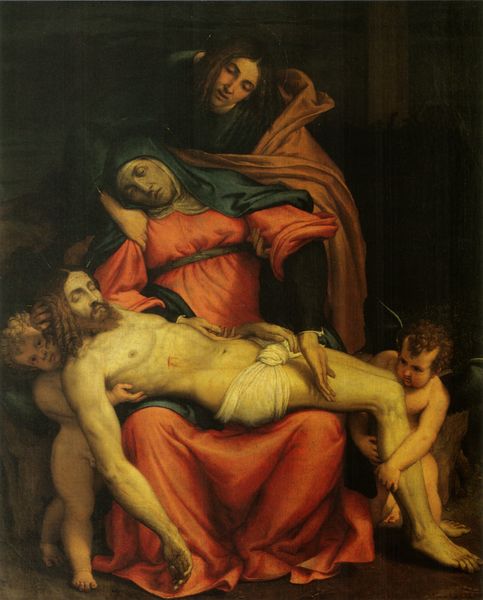
oil-paint
#
baroque
#
oil-paint
#
figuration
#
history-painting
#
italian-renaissance
#
nude
Copyright: Public domain
Curator: I see intense grief and tender vulnerability radiating from Giulio Cesare Procaccini’s work, “Cristo Deposto E La Maddalena”. The somber lighting certainly enhances that feeling. Editor: Indeed. Let’s consider how Procaccini constructs this emotive experience. Notice the tenebrism, that sharp contrast of light and shadow. The figure of Christ, rendered with a sensuous softness, is dramatically illuminated, drawing our eye immediately to the heart of the tragedy. Curator: The stark contrast serves more than just drama; it functions, as well, as a means to evoke collective memory surrounding suffering, death, sacrifice. Note, also, how Mary Magdalene is almost cloaked in darkness, her face a mask of anguish as she cradles Christ’s body. The use of the red cloth is quite interesting. Editor: Precisely. The chromatic composition certainly channels emotional intensity. Look closely—the red cloth hints at martyrdom and the Passion, drawing on familiar symbolism to deepen the artwork’s resonant associations, especially that particular rendering of the Magdalene’s face as a signifier for grief. Curator: We see the figures positioned within a compact space, heightening the sense of claustrophobia and despair. The diagonal arrangement of Christ's body further emphasizes the instability and loss inherent in the scene. It also emphasizes that sense of Baroque movement while utilizing Italian Renaissance models of the idealized form. Editor: And one can't ignore the legacy that such images create. Later depictions of loss within a domestic space are unimaginable without paintings such as this, embedding not only religious sentiment but evolving cultural and psychological values, generation after generation. Curator: Thinking about the technical aspects and thematic context helps me understand why this composition feels so visceral. Procaccini guides us towards feeling what this tragic scene must be. Editor: It is a testament to how symbols speak volumes over time. This remains a stark, hauntingly relevant depiction of profound human loss and unwavering devotion.
Comments
No comments
Be the first to comment and join the conversation on the ultimate creative platform.
